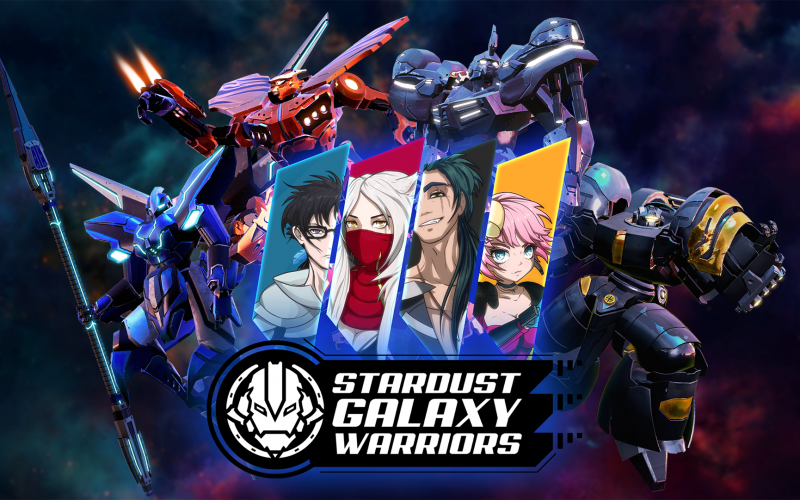You can easily tell within the first 10 minutes of playing whether you will like or not a shmup game. It’s quite a beautiful quality that the first impression easily carries 80% of the weight of your opinion. Contrary to other games, shmups expose you to the majority of the gameplay within the first stage, so its always a plus into validating your purchases.
I’ll admit I wasn’t expecting Stardust Galaxy Warriors at all. I always glanced it on the eShop and was intrigued by the 3D models and over-the-top presentation, but the “team” based aspect always turned me off as I am a shmup solo player at heart. Lucky me that I was proven wrong within the first 10 minutes as I got ready for a blast of an experience.
Developer: Dreamloop
Platform: Nintendo Switch
Release date: Nov 29, 2018
Price: $9.99
If I were to describe Stardust Galaxy Warriors (SGW from now on), I would say it is a super customizable horizontal shmup with endless configurations and class based multiplayer. That sounds like a lot, so let’s break it down into pieces.
Choose your warrior
At the beginning of your journey, you are tasked with picking one of 5 different mechs. All mechs can shoot 2 different weapons and perform melee attacks, however they all have their unique special attack and distortion attack.
These unique traits blend into the co-op aspect of the game, with some being on the offensive side like Red Tiger’s melee berserk attack. Others are more defensive like Black Bear and his ability to shield your allies. I imagine it all becomes pretty epic when playing with 3 other people, but as standalone mechs they all carry their weight for solo play too!
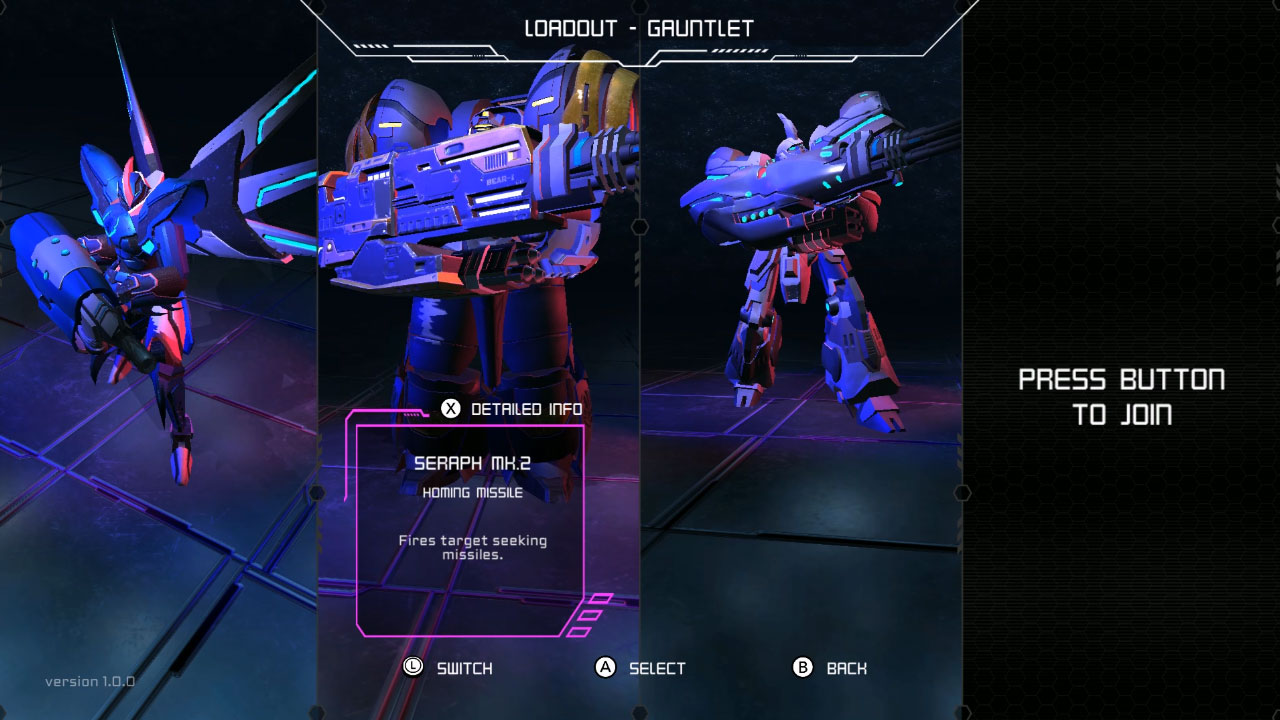
You are also prompted to pick your main and sub weapon. The weapons range from classics like the chain gun or pulse fire, to less common ones such as Darius’ wave shot or even flamethrowers. The sub-weapons let you pick different styles as well like grenades or homing rockets.
Even with just 5 different mechs, the configurations are quite numerous and definitely suited for any particular play style.
Going further beyond
In between levels you are presented with a shop that sells you upgrades.
By using the shop, you can buy upgrades to your stats such as attack, defense, critical hit rate, shield or distortion rate. There’s also additional perks that will give you uncommon abilities such as adding flame damage to your melee attack or a perk which transforms your critical hit rate into an attack increase.
As simple as an upgrade system might sound, I found it to be the perfect addition for SGW! What sets it apart is that the progression only lasts for your current run, which means you can go for different builds every run or even try alternate upgrade paths when using different weapons.
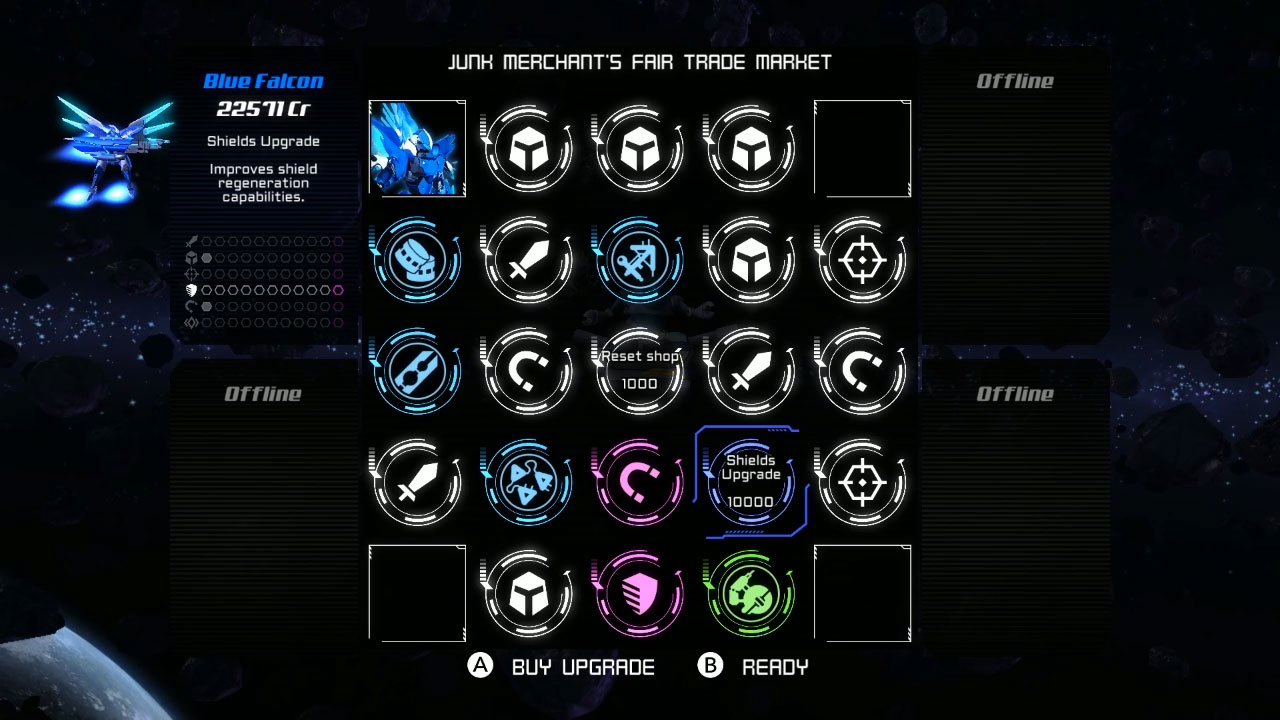
The way in which you shape your fighter from the loadout screen and how you build it is definitely something that makes SGW something else, something amazing.
Presets? More like usersets
If you thought the customization options were already enough, then you would be surprised to learn that you can customize your particular runs even further with the use of presets.
Presets let you tweak a whole lot of setting from the game. There are way too many to enumerate, but customizable settings include:
- Enemy defense
- Fire rate
- Enemy spawns
- Friendly fire
- Player hitbox
- Power-up drop rates
- and more!
You can truly make a run as easy or hard or rewarding as you so desire. If you are like me and think that tweaking is such a headache and too cumbersome, then you’ll be happy to hear that SGW comes with popular presets out of the box such as glass cannon mode, melee mode, hard mode, among others.
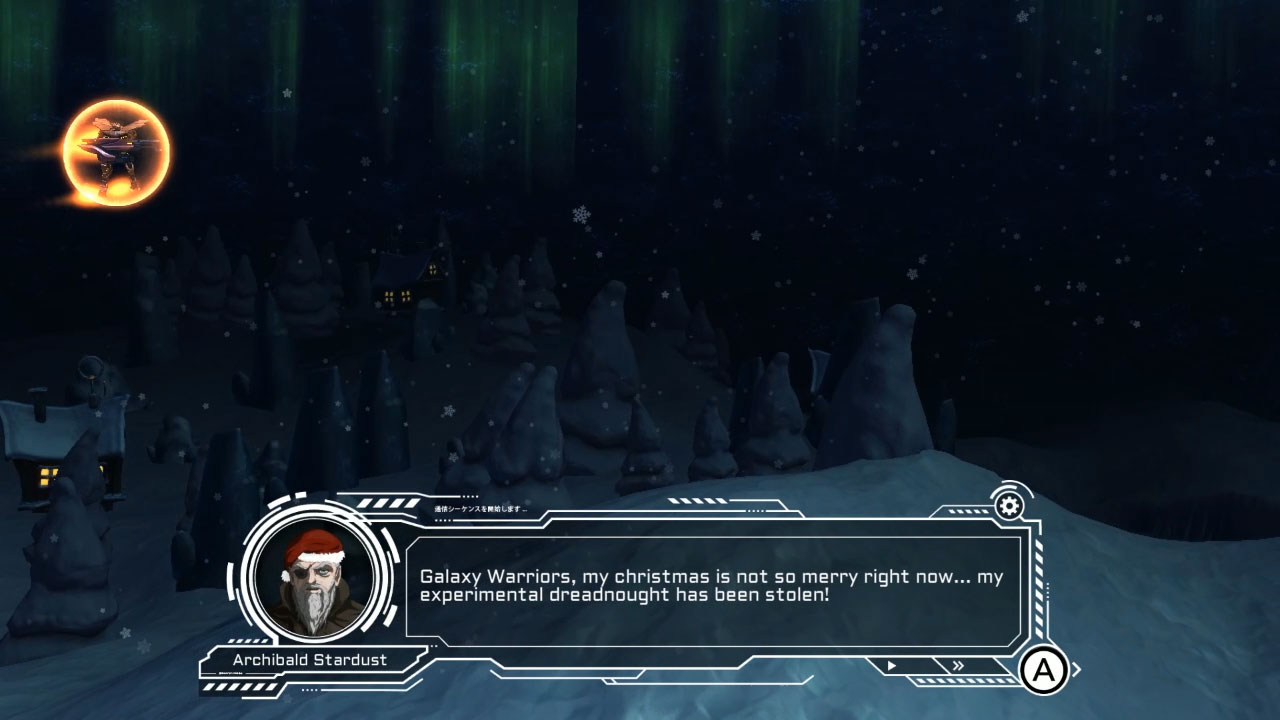
Even better is that you can apply the presets to every game mode!
Arcade action
There are 4 main modes which are the campaign, gauntlet, strike and challenge.
The campaign will take you through the “story” of SGW. The story is told thanks to character dialogue, and features a light hearted tone through the entirety of the campaign. It also features all five pilots, so don’t worry about missing on the story just because you only like to pick one mech. The final boss is quite insane, so look forward to that!
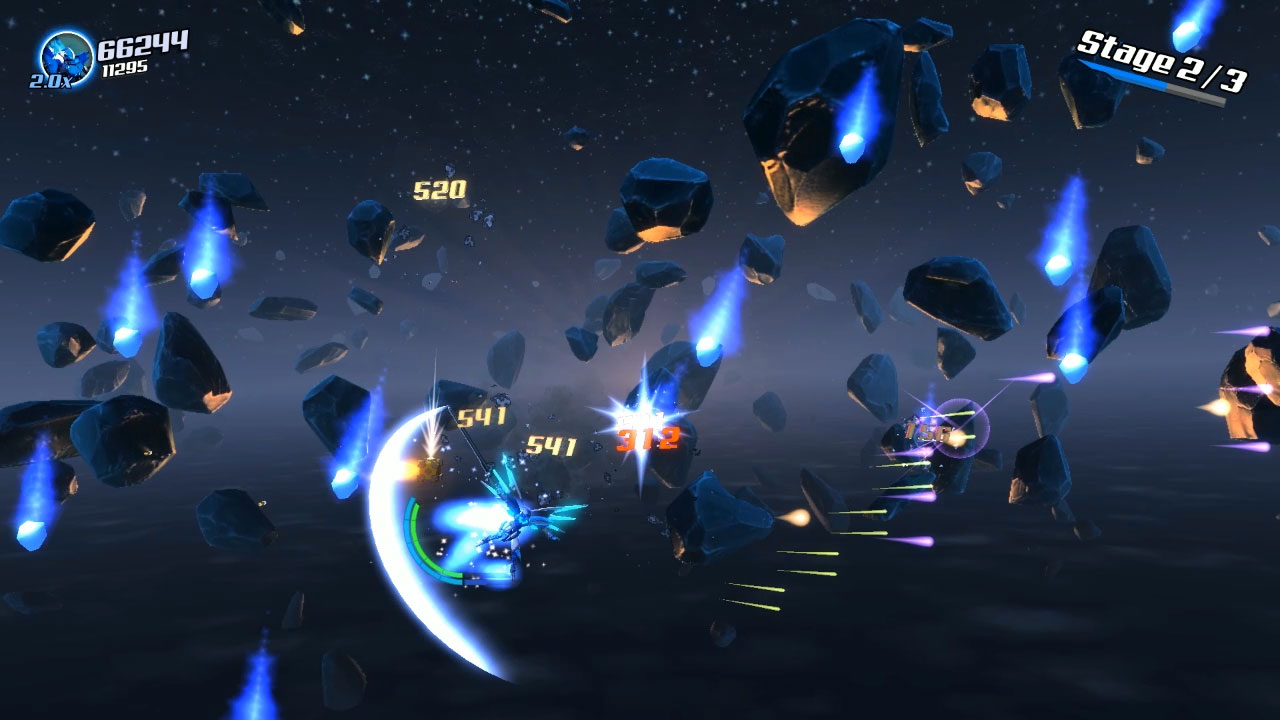
Gauntlet is a fancy way of saying arcade mode. You go through and endless number of levels while doing your best to survive. As much as I love arcade modes, I wasn’t a big fan of this one because it lacks a very crucial component: the shop. It also lack the environmental variety of the campaign, because your endless run is only endless within the same biome.
Strike mode is, to me, the better version of Gauntlet. It features the same gameplay, but thankfully it allows you to buy upgrades at the shop. As I mentioned before, there’s a lot of fun in being able to buy abilities and upgrade your stats, which is why I consider it the better way to play.
Finally, challenge mode offers pre-designed challenges to test your skills. There are only 5 challenges, but they offer some needed extra modes such as boss rush challenge and an 8 stage arena where each level adds a new constraint.
The finer print in the gameplay
One of the features I was most delighted about was the mech’s hitbox. You know I am a hitbox junkie, so my first impression was that the hitbox was your gun. I played a fair amount under this assumption and felt really happy as the gun presented a nice center for your character, while also being very intuitive in terms of which types of movements you use to avoid enemy fire.
It wasn’t until later when I discovered you can make the hitbox visible in the options menu. It isn’t quite the gun, but it still is a circle on the center of your mech which retains the intuitiveness of protecting your core.
There are 2 major flaws which I found in the game, those are: enemy durability and enemy design.
While being very subjective, I feel like the enemy ships have very bland designs that neither stand out nor leave an impression on the player. Think about iconic shooters like Ikaruga and how the enemies offer unique and interesting designs. Now look back at SGW and you’ll see that most enemies feel pretty generic.
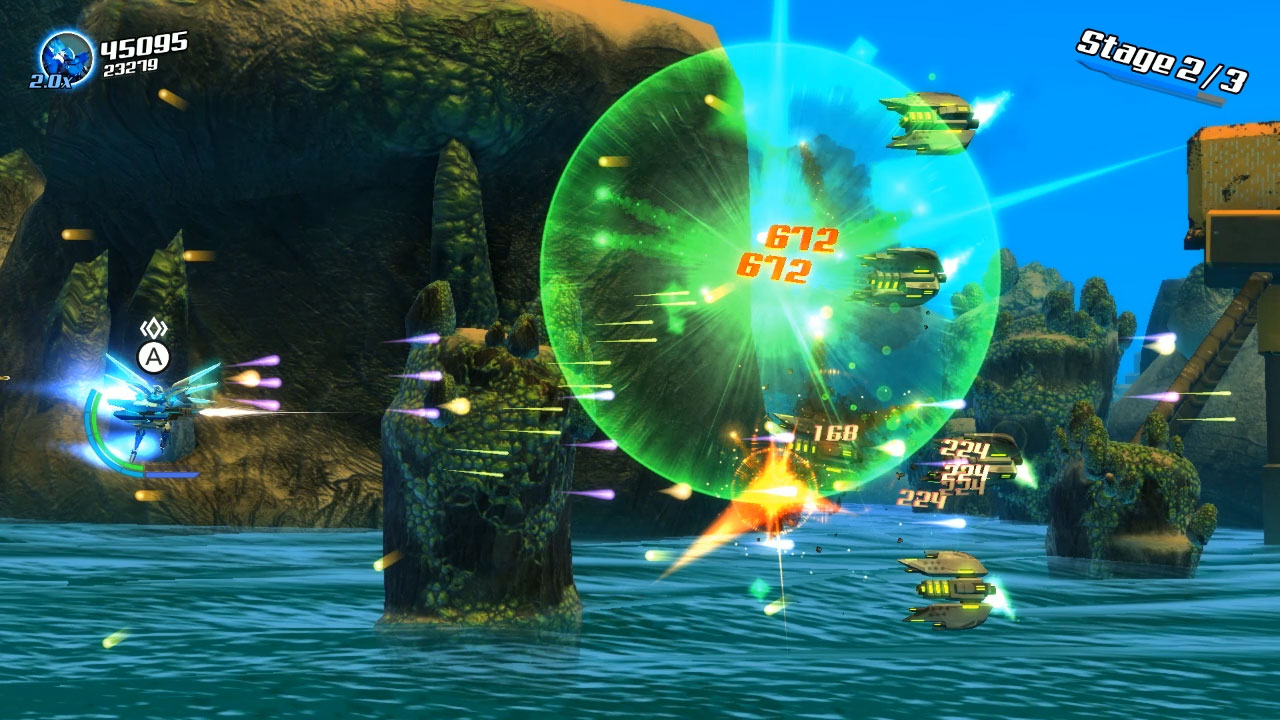
The enemy formations also feel like just a clumping of enemies with a semi-coherent combat synergy. Some feel actually good, but most are pretty hit or miss.
The other major flaw comes from the enemy and boss durability. Enemy defenses are on the higher side when compared to other shmups. The reason this feels unrewarding is that they create scenarios where you have to stand in place just holding the shoot button until an enemy dies, then move to the next in formation and repeat. The way the waves are designed, is to have you dispose of the enemies in a sequential fashion to diminish their threat, but rather than feeling fun and dynamic it feels tedious and time consuming. Bosses are straight up sequences of attack patterns, so your only challenge is to survive enough loops of their AI to successfully empty their HP.
Presentation
There is one thing which I completely loved about this game, and that’s the presentation. From the models, to the characters to even the fighter designs (except the enemies, as previously mentioned), they all look and feel really good.
I thoroughly enjoyed the exchanges between the dialogue, I enjoyed the posing of my mech on the loadout screen and even loved seeing how it all moves when playing the game.
I’ve been thinking about how I feel about the music for some time. The short version is that it has really good and catchy tracks. You know how most other games have a “space” level? Well, the OST in general feels like a collection of space level songs, I enjoyed it a lot!
Final words
If Stardust Galaxy Warriors was a character in a fighting game, I’d say it would feel like an upper mid-tier character. I don’t mean this from a quality standpoint, but rather in the sense that as a whole it has some great strengths, but also has its weaknesses.
The strengths are easily the variety in the play style, the mechs and the presentation. The weaknesses are a combination from a lack of creativity in most things enemy related and a slightly grindy combat feeling.
Even with that, Stardust Galaxy Warriors remains a blast to play and an even better pick-up and play shmup that will never be the same experience!
- Ikaruga
- Devil Engine
- Steredenn: Binary Stars
- Stardust Galaxy Warriors: Stellar Climax
- Sky Force: Reloaded
- Black Paradox
- R-Type Dimensions EX
- Shikhondo – Soul Eater
- AngerForce: Reloaded
- Aero Fighters 2 (ACA Neogeo)
- Lightening Force: Quest for the darkstar (Sega Ages)
- Switch ‘N’ Shoot
- Last Resort (ACA Neogeo)

